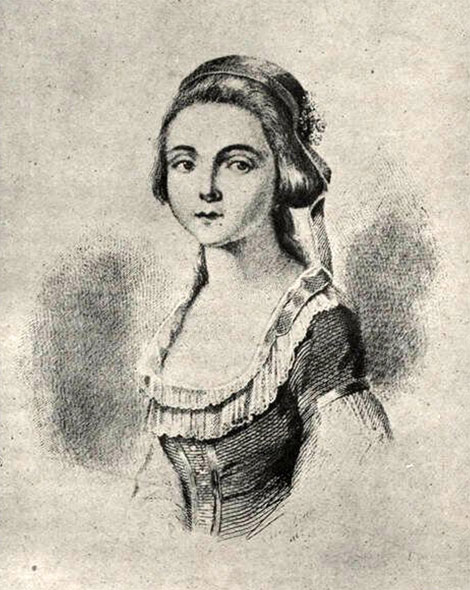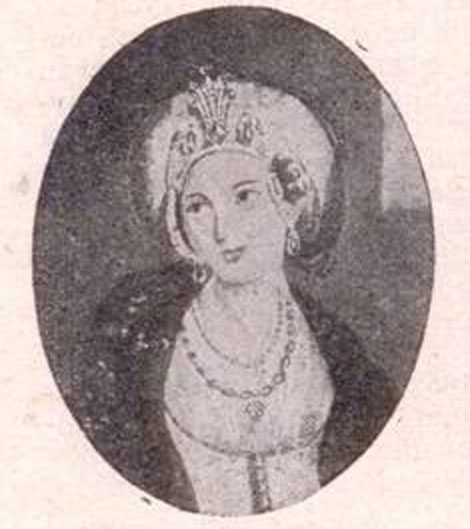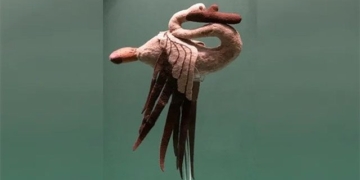Everything seems to have come true for Joséphine, the first wife of Emperor Napoleon Bonaparte. However, the story of her cousin Aimée du Buc de Rivéry remains controversial.
A Free-Spirited Childhood
Born in 1768 into a wealthy sugar plantation family in Pointe Royale, Martinique, a French colony, Aimée du Buc de Rivéry undoubtedly enjoyed a life of freedom and pampering.
According to many historians, Aimée’s childhood was quite similar to that of Marie Josèphe Rose Tascher de La Pagerie, who later became Empress Joséphine of Napoleon and the grandmother of Emperor Napoleon III. Joséphine once wrote about her childhood: “I ran, I jumped, I danced from morning till night; no one constrained or hindered me.” Aimée and Marie are believed to have been quite close while growing up in Martinique.
In Andrea Stuart’s book “The Rose of Martinique: A Life of Napoleon’s Josephine,” the two young girls were said to have heard prophecies about their lives, that both would rise to the highest status in the “harem.”

Portrait of Aimée du Buc de Rivéry.
During a stroll, Aimée and Joséphine unexpectedly encountered a fortune teller. He stated that Joséphine would regret the “days of living freely in Martinique,” but that the trade-off would be worthwhile as she would marry a “man who was nothing remarkable” but would elevate her to a status “higher than that of a queen.” Meanwhile, Rivéry’s fate seemed more tumultuous as the fortune teller warned that she would fall into the hands of pirates and be sold to “a grand palace” on the other side of the world.
According to Stuart’s book, Empress Joséphine later recounted the old tale of the prophecy multiple times, believing it to be the truth of what happened later to both her and her cousin Rivéry.
A Mysterious Origin
Some believe that the young Aimée vanished during a sea journey in 1778, just a year before Joséphine’s journey made her the Queen of France. Others suggest that Rivéry disappeared after returning from a convent in France and was kidnapped by pirates. There are even legends that she was abducted at the age of 2 or drowned in a shipwreck.
Most believe that Aimée du Buc de Rivéry was sent to study at a convent in France, and on her way home, her ship was seized by Barbary pirates. She became a slave and was taken to Constantinople (modern-day Istanbul) as a gift for the Ottoman Sultan under the name of the Pasha of Algiers. There, she became one of the Sultan’s wives under the name Naksidil.

Portrait of Naksidil, believed to be Aimée du Buc de Rivéry.
Naksidil was the favored wife of Ottoman Sultan Abdul Hamid I and later the mother of Sultan Mahmud II. She became the official (kadin) fourth wife of the Sultan and witnessed many struggles within the harem, especially as the first wife Nükhet Seza and the second wife Mihrimah vied to elevate their sons to the throne. Not participating in these conflicts, Naksidil quietly observed and sought to protect her own son.
In 1789, during the time of the French Revolution, Sultan Abdul Hamid I passed away. Selim III ascended the throne at the age of 27, succeeding his uncle, and allowed Naksidil to remain in the Seraglio palace with her son, the cousin Mahmud.
For Selim, Naksidil symbolized the French culture he admired. She became a confidante of Sultan Selim III, teaching him French, and during that time, the Ottomans sent their first permanent ambassador to Paris. Selim III established a newspaper in France and allowed Naksidil to decorate the palace in the style that was fashionable in France at the time.
However, these reforms ultimately cost him his life. Sultan Selim III was assassinated in 1807 by extremists opposed to the liberal policies he initiated. The assassins attempted to kill Mahmud, but Naksidil cleverly hid her son.
Mahmud subsequently became the Sultan of the Ottoman Empire in 1808, completing significant reforms from Selim III’s time, largely influenced by his mother, to save the declining empire.
As an intelligent and perceptive individual, he learned from Western reforms, especially in governance, military, law, and finance. Mahmud II is regarded as the one who modernized the Ottoman Empire and is often compared to Peter the Great of the Ottoman Empire.
Naksidil always strictly adhered to Islamic rituals in the harem, yet deep in her heart, she remained a Christian. Her final wish was to have a priest perform her last rites upon her death. Sultan Mahmud II did not refuse his mother, and when Naksidil passed away, for the first time, a Christian priest entered the palace gates into the harem.
This was extremely significant, as the Ottoman harem (or harem in Arabic) means “forbidden.” It was a secret place off-limits to men and other ordinary women, as only the empire’s rulers, the Ottoman Sultans, could enter, along with princes, but they had to adhere to strict regulations. They could only stay there with their mothers until the age of 16.
The harem of the Ottoman Empire was not merely an architectural area but rather resembled a small city. The affection Naksidil received from Sultan Abdul Hamid I was evident in the fact that she had her own palace and was allowed to express her values and culture there.
Affirmation and Denial
There is abundant documentation proving Naksidil’s origins and background. A letter in “Royal French Women in the Ottoman Sultan’s Harem: The Political Uses of Fabricated Accounts from the Sixteenth to the Twenty-First Century” by Christine Isom-Verhaaren discusses Naksidil after her death in 1817, stating: “It is said that the recently deceased Valide Sultan was French… and that when she was only 2 years old, her parents took her to America. Unfortunately, they were kidnapped to Algiers and died there… She was brought to Abdul Hamid, who noticed her beauty and elevated her… It is said that she possessed the grace and elegance of a Corsican and Georgian, which is not surprising since she was French.”

Sultan Mahmud II, son of Naksidil.
During the reign of Ottoman Sultan Abdulaziz, around the mid-19th century, Empress Eugenie (wife of Emperor Napoleon III) visited Constantinople and wanted to meet women in the harem. A meeting was quickly arranged.
Empress Eugenie was very excited by what she witnessed and eager to converse with everyone; she asked, “Is there anyone here who can speak French?” but everyone looked at each other and shook their heads. Finally, an older woman said: “Before Valide Sultan Naksidil passed away, there was a young girl she named Naime, whom she taught French. And I think that girl is still living in the Old Palace.”
Naime was called from the “Palace of Those No One Wants,” and brought to meet Empress Eugenie. Naime was somewhat shy but quite proficient in French with a Martinique accent.
Another story took place around the 1860s. During a visit to Paris, Sultan Abdul Aziz, son of Sultan Mahmud II, mentioned that his grandmother had a blood relationship with Emperor Napoleon III. This was emphasized by many as evidence that Rivéry and Naksidil were the same person. But the question arises: why has the truth of this story sparked so much controversy throughout history?
The most plausible answer is likely due to political factors. From the perspective of the Ottoman Empire, having a blood relationship with the French royal family was simply a clever foreign policy. For the French, this hypothesis further solidified Emperor Napoleon III’s claim to royal blood, as he did not belong to traditional royal lineage.

Tomb of Valide Sultan Naksidil.
In reality, the combination of a wealthy heir and a figure in the harem did not begin with Rivéry and Naksidil. Since the 16th century, there have been rumors that a French princess was married into the Ottoman royal family. However, some historians argue that the timing of Aimée’s disappearance and the birth of Prince Mahmud II does not logically connect, and there is evidence suggesting that Naksidil actually originated from the Caucasus, not from Martinique.
Researcher Robert Vine writes: “The legend states that two young girls, who were cousins, on an island in the Caribbean became the Queen of France and the mother of the Ottoman Sultan, which is indeed a thrilling story. Unfortunately, there is no evidence to prove that any of it is true.”
It is very likely that this legend was created for certain purposes. Many stories dating back to the early 16th century have been woven about the relationship between the French royal family and the Ottomans for political motives, with the explicit aim of legitimizing the alliance between these regimes. Thus, many believe that the story of Aimée – Naksidil is just one of them. At that time, people were not even shy about or tried to hide stories of kidnapped French princesses; in fact, both Emperor Napoleon and Sultan Abdulaziz seemed quite comfortable discussing this connection.
Later on, similar legends continued to be cited to speak of the mystery and despotism of Turkey, the Middle East, or Islam in general. These legends even reinforced the prejudice that the Ottoman Empire was merely an underdeveloped nation, where even a Western slave could create innovations while the locals could not initiate the necessary reforms.


















































